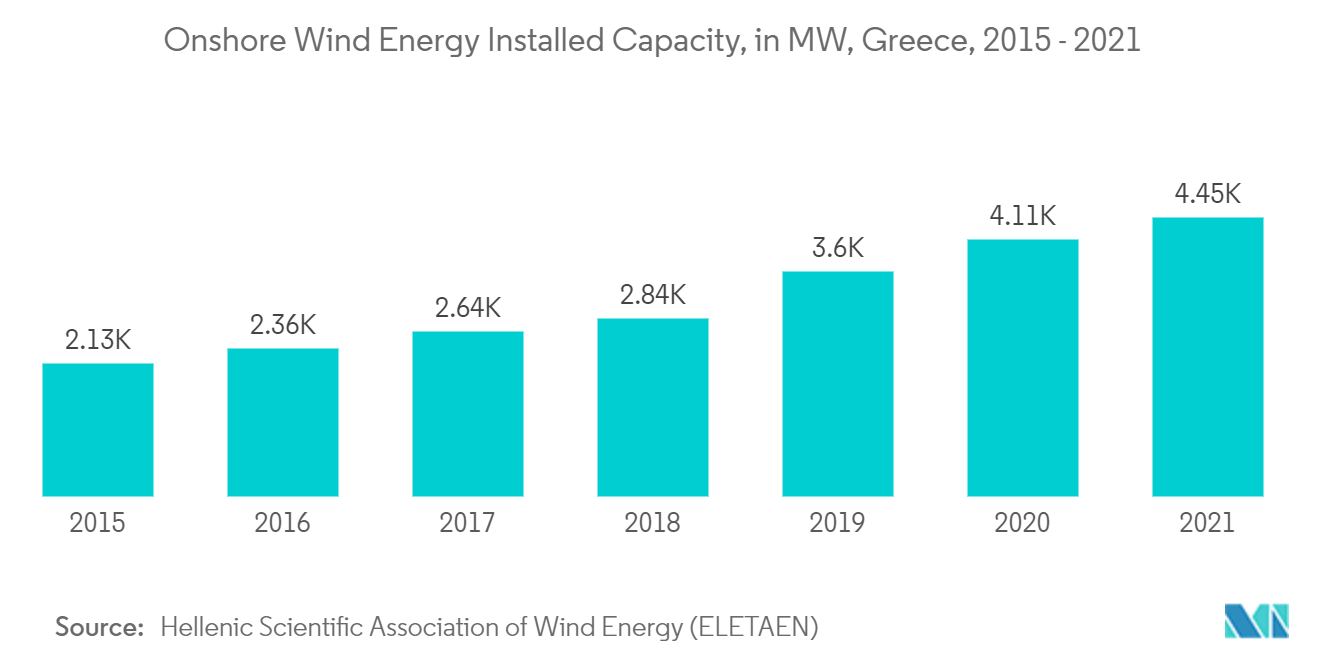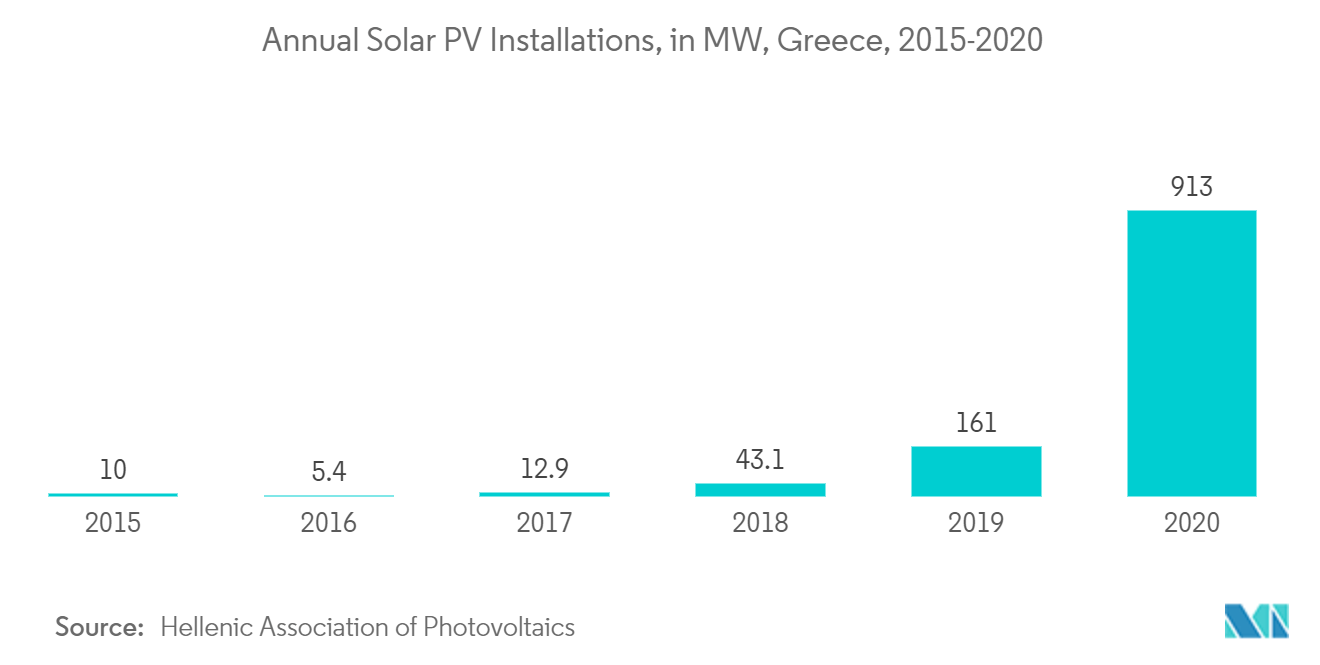Market Trends of Greece Wind Energy Industry
This section covers the major market trends shaping the Greece Wind Energy Market according to our research experts:
Onshore Segment to Dominate the Market
- Greece's renewable energy mix is dominated by wind energy. Wind energy is the fastest-growing renewable energy source. The total wind energy installed capacity accounts for a share of about 37.9% of the total country's renewable energy mix.
- As per the Hellenic Scientific Association of Wind Energy statistics 2022, onshore wind energy reached 4,451 MW of installed capacity in 2021. The onshore wind registered 8.2% Y-o-Y growth.
- Greece pledged to install 7GW of wind energy in the country by 2030. Currently, Greece has 4 GW of wind energy installed, all onshore, covering 12% of its electricity demand in 2020. The potential for wind energy in Greece is much bigger, especially for onshore wind.
- In December 2020, Terna Energy secured EUR 585 million to develop 18 wind projects with a total capacity of 360 MW in the Karystos municipality. These projects were connected with the National Electricity Transmission System through a 69 km long submarine cable.
- Furthermore, five other wind projects with a total capacity of 120.3 MW, worth EUR 121.3 million, have been approved. These projects are expected to come up in the regions of Xanthi and Rodopi, Greece.
- In March 2021, Iberdrola signed a 102 MW turbine supply contract for its Askio II, Askio III, and Rokani wind farms. The Rokani project in the Viotia region installed three EnVentus V162-6.0 MW turbines, the most powerful onshore wind turbines in the market to be used for the first time in Greece.
- In December 2021, EDP Renewables constructed and inaugurated a 45MW wind energy plant. The plant is situated near the town of Malesina in central Greece and is expected to produce enough electricity to power over 28,000 households.
- Hence, the above points indicate that increasing onshore wind energy is expected to dominate the Greek wind energy market during the forecast period.

Rising Emphasis on Solar Energy Restraining the Market Growth
- Greece is a Southern European country that has abundant solar radiation compared to Northern European countries. As a result, the investment yield is higher. The cost of land in Greece is lower than its Northern European counterparts for solar energy development. As a result, solar energy development is expected to attract major investments in the coming years.
- As per the Hellenic Association of Photovoltaics statistics 2021, Greece's solar PV capacity grew over 400% in 2020, with 913 MW installed, compared to 161 MW in 2019. This is the major factor hindering the wind energy market.
- Greece's new national energy plan mandates 7.7 GW of cumulative solar PV capacity by 2030. Specifically, the plan calls for the nation's total installed PV capacity to increase from 3.74 GW in 2020 to 3.9 GW in 2022, 5.3 GW in 2025, and 6.3 GW in 2027. The mandates are expected to attract new investments for ground-mounted solar projects.
- As per European Union Market Outlook for Solar Power 2021, Greece has over 85 GW of solar project pipeline comprising ground-mounted and rooftop solar projects, and major energy stakeholders in the country are looking to invest in the domestic solar sector.
- Furthermore, legislation has been passed by the Greek Parliament in 2020, which gave the right to solar PV developers, especially for ground-mounted solar projects, to secure a higher tariff for the energy fed into the grid, based on a declaration of "readiness for connection". As a result, there was a boom in installations in 2020 compared to the previous year.
- In July 2021, National Energy (NE) announced the commencement of its first greenfield solar energy project construction with an installed capacity of 24.08 MWp. The project installation is being done in the regions of Viotia and Fthiotida, Greece.
- The solar energy sector in the country has been growing significantly more than the wind energy sector over the last decade, and it is expected to maintain its dominance in terms of growth during the forecast period, supported by favorable government policies. This is expected to hinder the growth of the Greek wind energy market.


